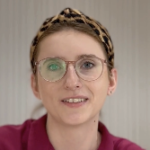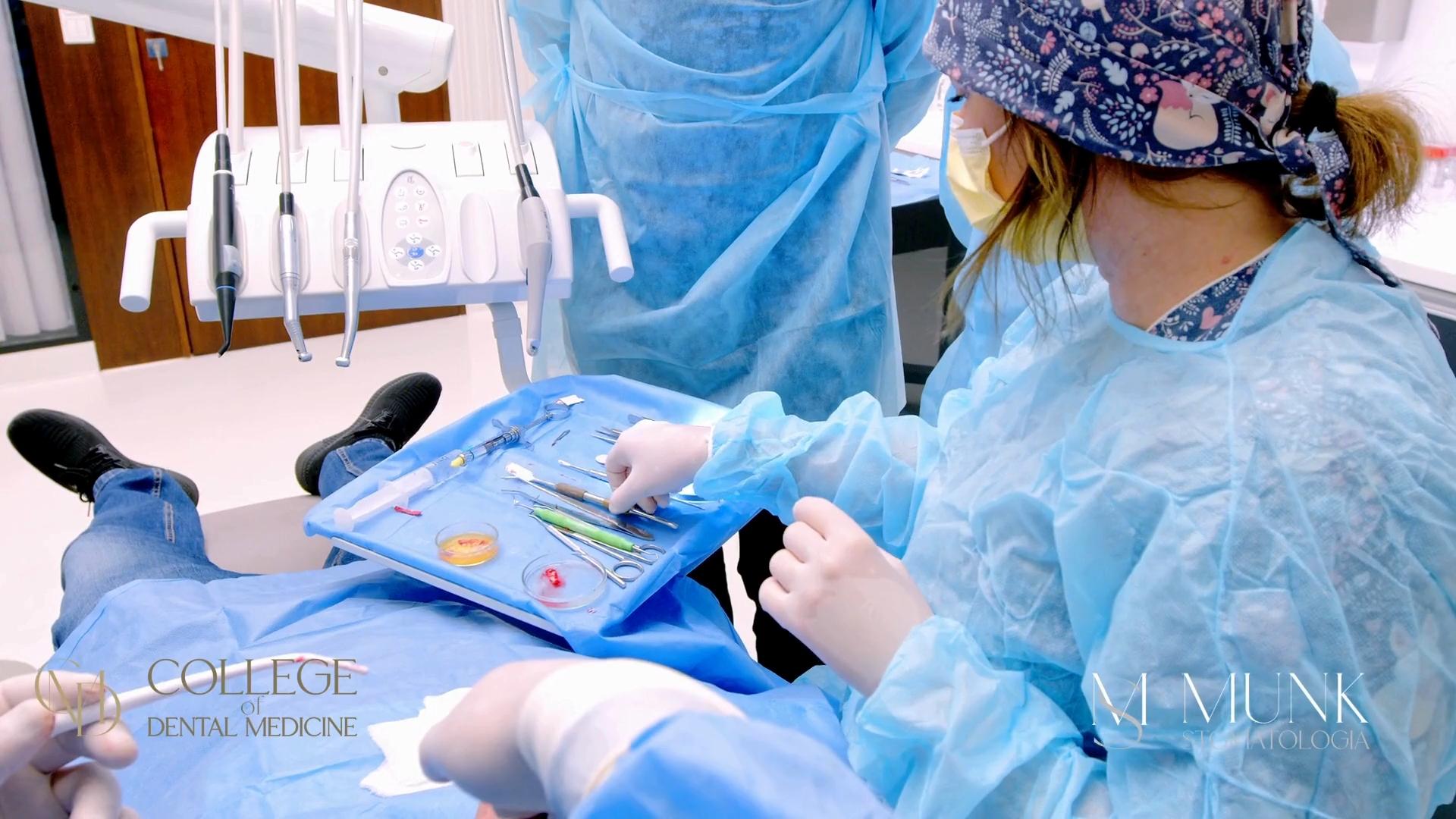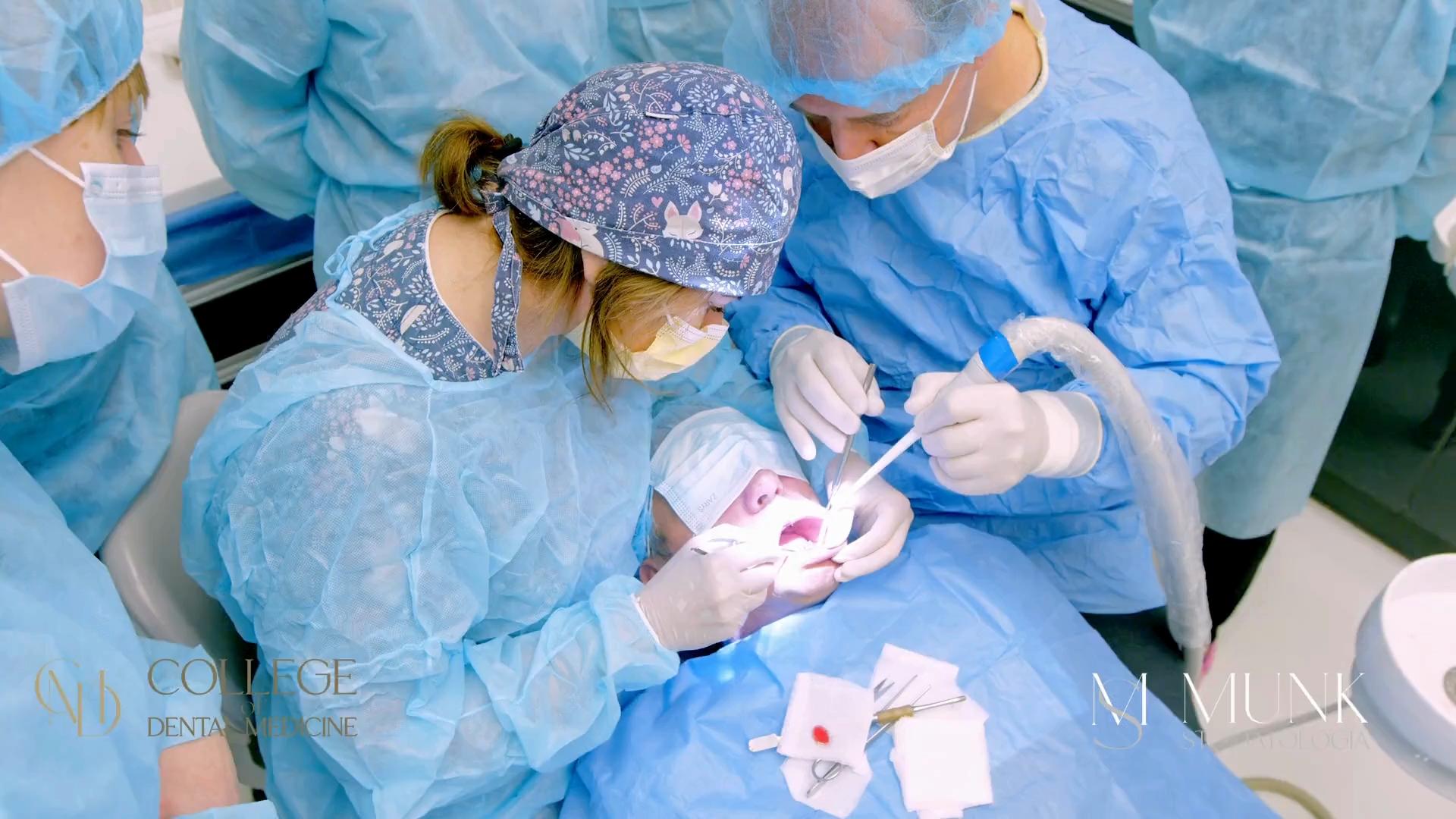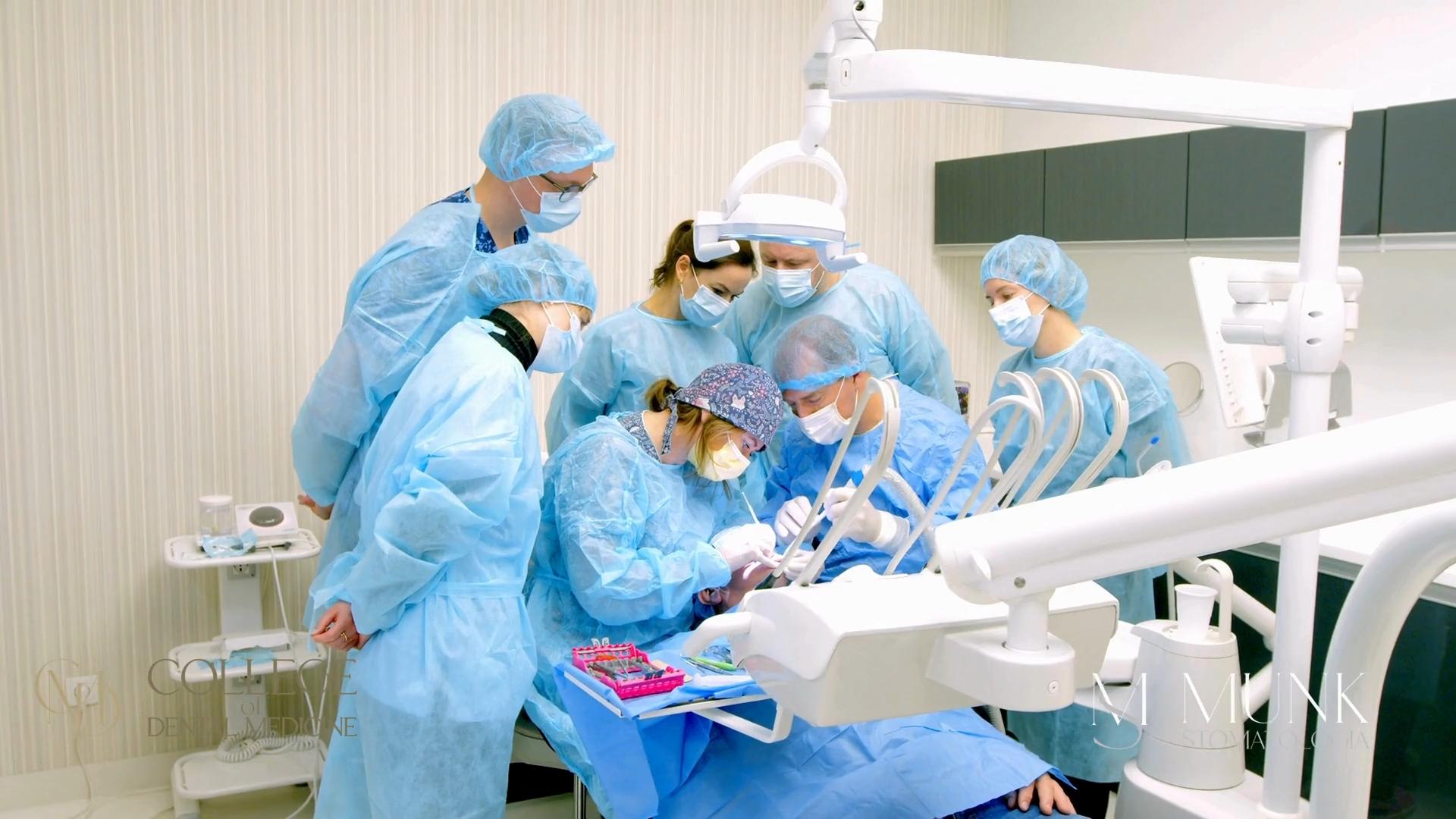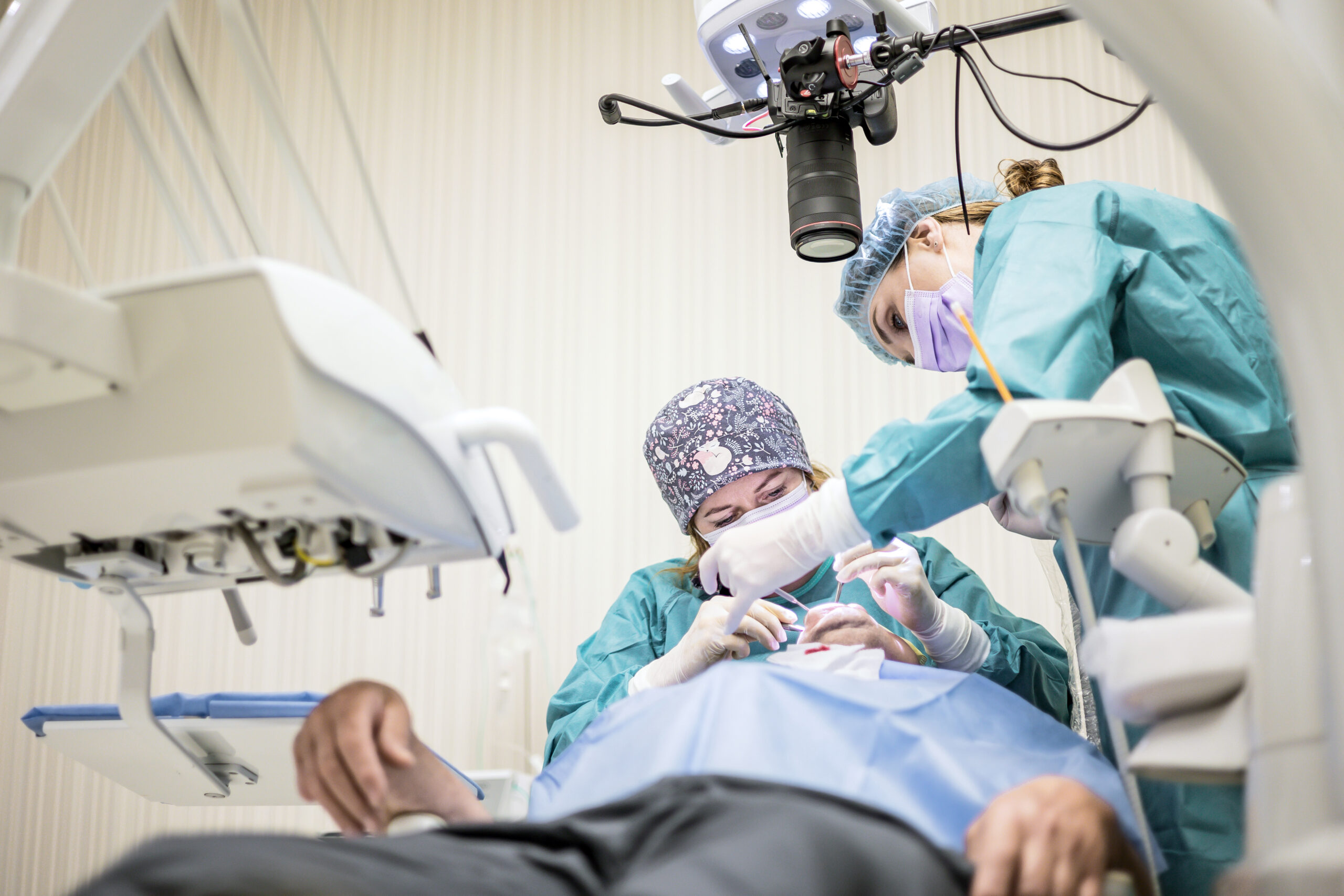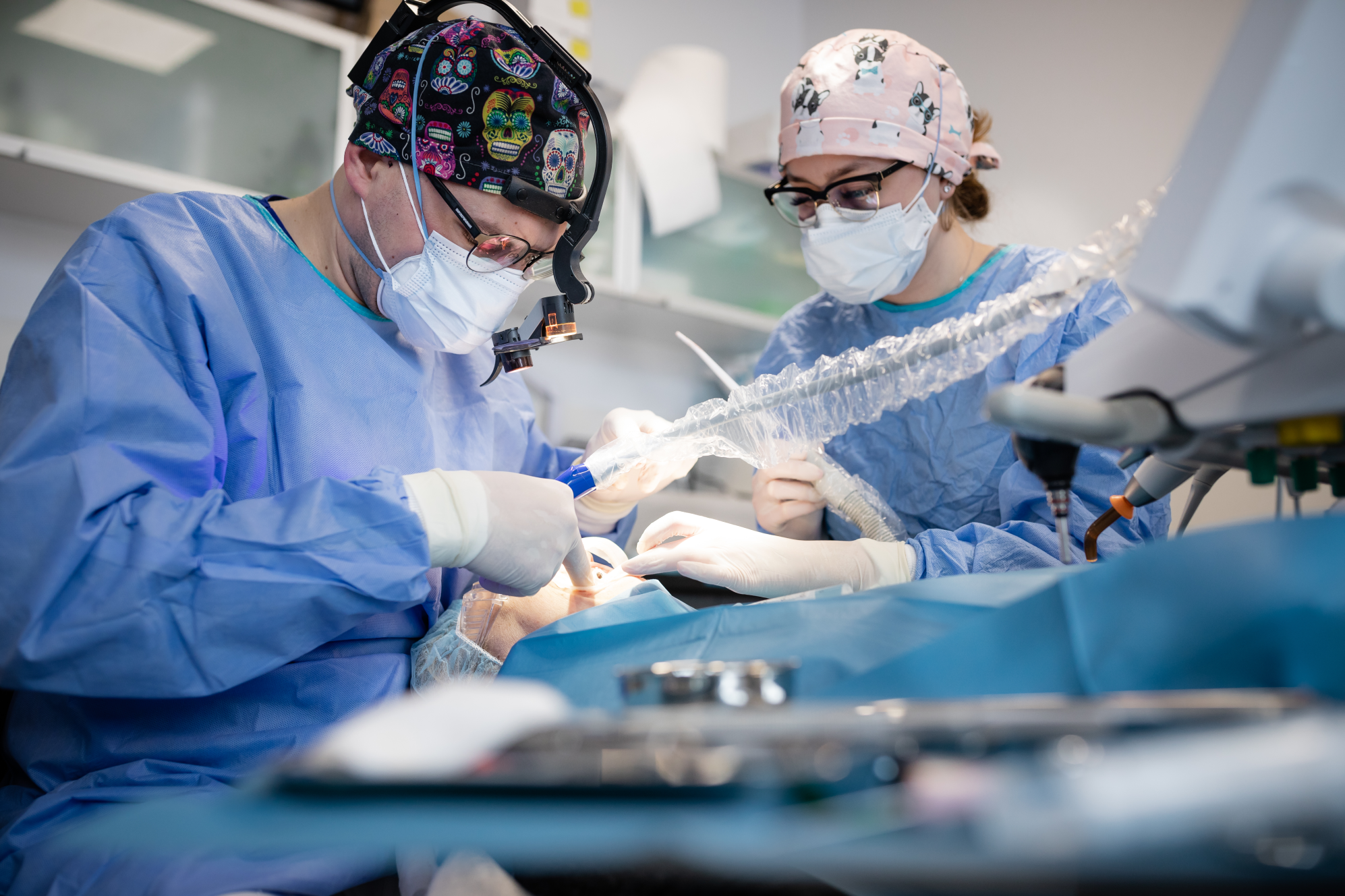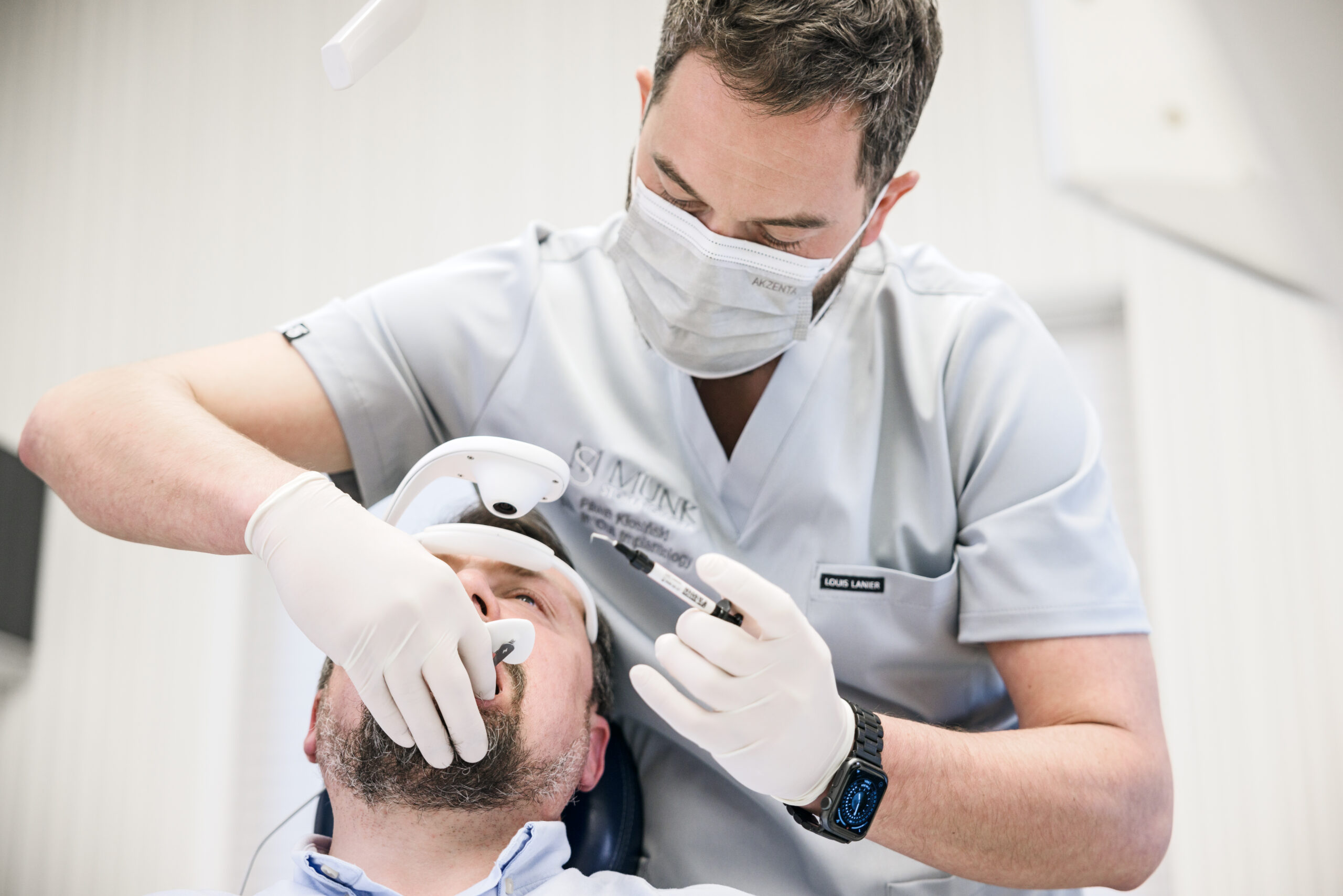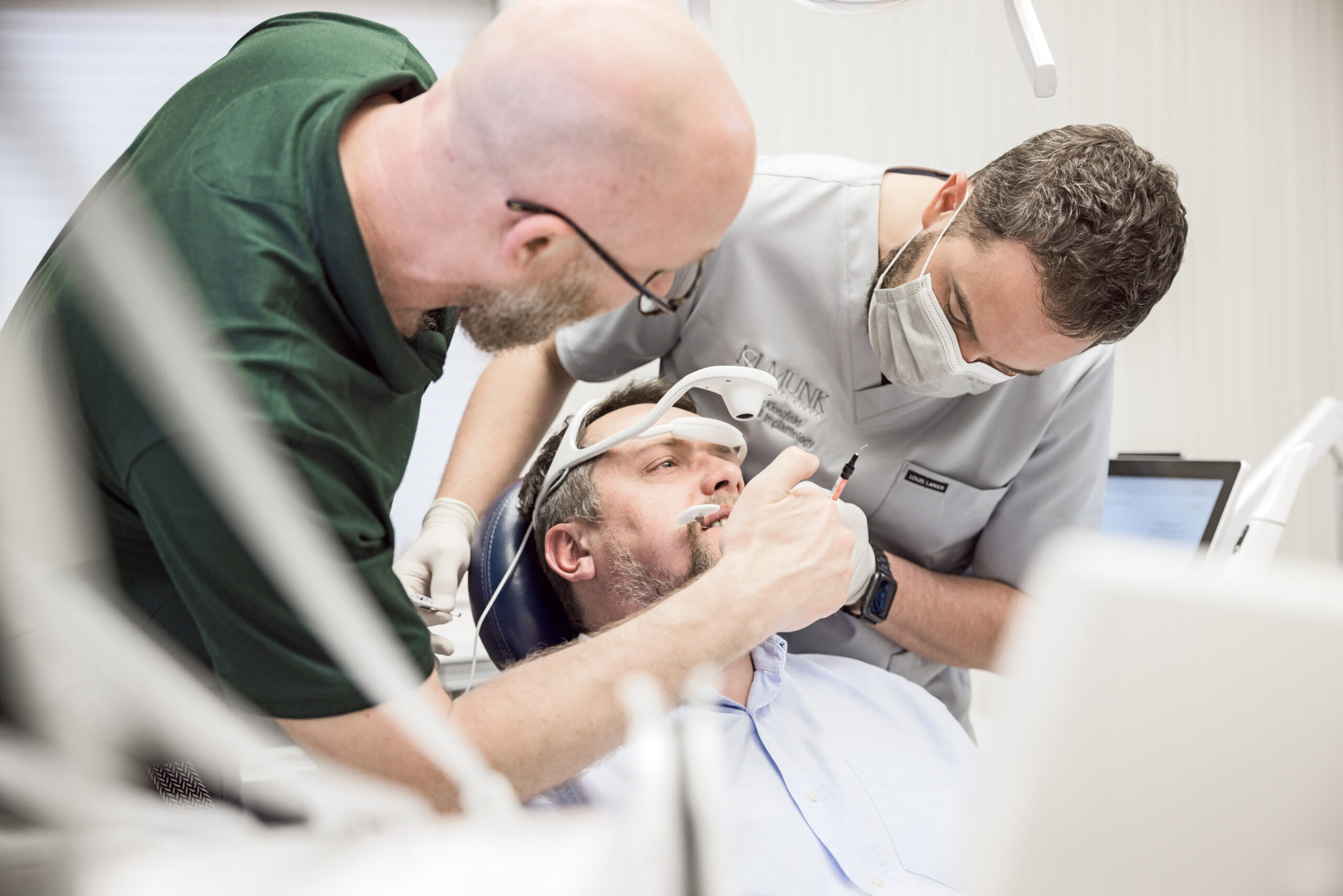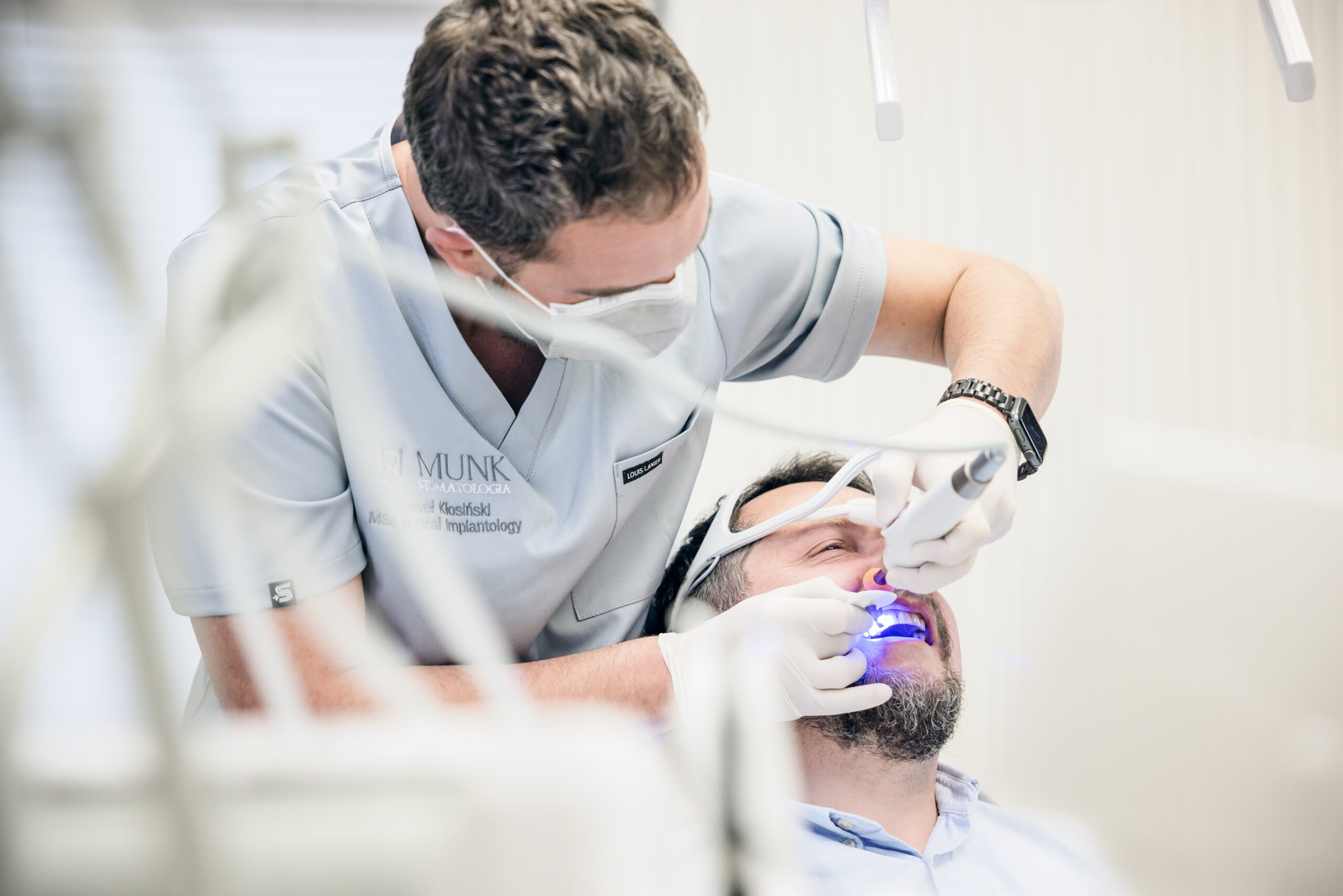

Curriculum perioimplantologiczne
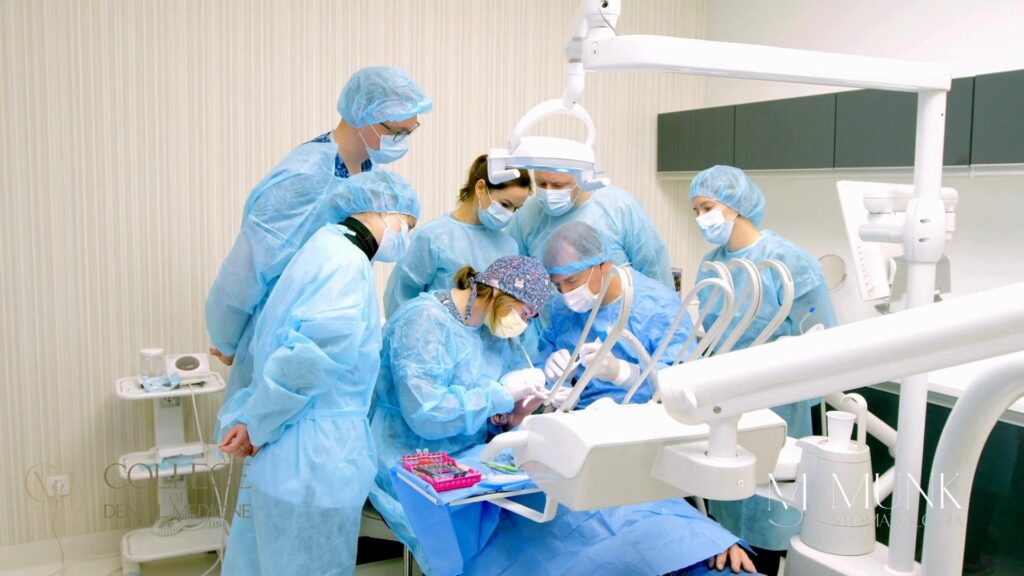
- Szkolenie teoretyczne.
- Warsztaty hands – on.
- Pacjenci Live.
- Czynna asysta przy zabiegach perioimplantologicznych.
- Tylko praktyczne informacje.
- Każdy uczestnik otrzymuje 44 punkty edukacyjne.
- Liczba miejsc ograniczona, 6-cio osobowe grupy.
- Język kursu:
- polski,
- angielski.
Program
Celem Curriculum jest przekazanie podstaw wiedzy z zakresu perioimplantologii lekarzom dentystom, którzy nie mają doświadczenia w periodontologii i jej zastosowaniu w implantologii, mają niewielkie doświadczenie lub chcą usystematyzować dotychczasowy zasób nabytych wiadomości. Przeprowadzone szkolenie będzie obejmować wprowadzenie do perioimplantologii, warsztaty z nauką technik zabiegowych a każdy uczestnik szkolenia będzie miał również możliwość czynnego asystowania przy przyjmowaniu wielu pacjentów perioimplantologicznych na różnych etapach leczenia. Szkolenie odbywa się w grupach 6 osobowych.
dr n. med. Marta Cieślik – Wegemund
- Różnice anatomiczne i histologiczne pomiędzy przyzębiem wokół implantów i zębów.
- Omówienie miejscowych i ogólnoustrojowych czynników ryzyka wystąpienia zapalenia przyzębia, mucositis i periimplantitis. Czynniki bakteryjne, zapalenie przyzębia, nikotynizm, zła higiena, przeciążenia zwarciowe, parafunkcje, osteoporoza, cukrzyca, radioterapia, leki.
- Podział zapaleń okołowszczepowych i zapaleń przyzębia.
- Algorytm postępowania w przypadku zapalenia okołowszczepowego. Protokół CIST.
- Rola fazy podtrzymującej w długoletnim funkcjonowaniu implantów w jamie ustnej pacjenta.
- Algorytm wizyt kontrolnych w zależności od istniejących czynników ryzyka.
- Wpływ braku dziąsła zrogowaciałego w etiopatogenezie zapaleń okołowszczepowych.
- Wpływ biotypu dziąsła w etiopatogenezie zapalenia okołowszczepowego i zaburzeniu z zakresu estetyki kompleksu biało-czerwonego.
dr n. med. Marta Cieślik – Wegemund
- Przygotowanie pacjenta z zapaleniem przyzębia do zabiegu implantacji. Rodzaje zabiegów płatowych. Techniki szycia.
- Wskazania do leczenia niechirurgicznego.
- Instrumentarium wykorzystywane w leczeniu niechirurgicznym i chirurgicznym.
- Wskazania do leczenia chirurgicznego.
- Leczenie resekcyjne, implantoplastyka.
- Leczenie regeneracyjne. Sterowana regeneracja kości w obrębie implantów w przebiegu periimplantitis. Sterowana regeneracja tkanek przyzębia w przebiegu periodontitis. Rodzaje materiałów kościozastępczych i membran zaporowych.
- Rodzaje czynników wzrostu i omówienie ich działania.
- Wykorzystanie A-PRF i I-PRF w GTR i GBR.
- Omówienie metod dekontaminacji mechanicznej powierzchni implantów w przebiegu leczenia niechirurgicznego i chirurgicznego.
- Omówienie metod dekontaminacji chemicznej powierzchni implantów w przebiegu leczenia niechirurgicznego i chirurgicznego.
- Leczenie niechirurgiczne i chirurgiczne z wykorzystaniem terapii fotodynamicznej. Protokół postepowania.
- Antybiotykoterapia miejscowa i ogólnoustrojowa w przebiegu zapaleń przyzębia i zapalenia okołowszczepowego.
- Wykorzystanie laserów w leczeniu zapaleń przyzębia i zapaleń okołowszczepowych.
dr hab. n. med. Rafał Wiench
- Ocena higieny u pacjentów przed i po implantacji. Wskaźniki higieny.
- Omówienie instrumentarium diagnostycznego wykorzystywanego w badaniu tkanek przyzębia wokół zębów i implantów.
- Metody diagnostyczne wykorzystywane w badaniu tkanek wokół zębów i implantów. Badanie bakteriologiczne. Badanie genetyczne.
- Ocena zaawansowania stanu zapalnego i rokowania w zakresie przeżycia zębów własnych i implantów w przebiegu periodontitis i periimplantitis. Wskaźnik krwawienia.
- Ocena parametrów klinicznych ( PD, CAL, MR).
- Diagnostyka radiologiczna ubytków kostnych.
dr n. med. Marta Cieślik – Wegemund
- Techniki pogłębiania przedsionka jamy ustnej.
- Technika poszerzenia strefy dziąsła zrogowaciałego z wykorzystaniem przeszczepu nabłonkowo-łącznotkankowego (FGG). Technika pobierania przeszczepu. Techniki preparowania miejsca biorczego. Technika szycia miejsca biorczego i dawczego.
- Techniki pobierania przeszczepu łącznotkankowego. Metoda szycia miejsca biorczego.
- Metody augmentacji tkanki miękkiej w okolicach implantu w celu poprawy estetyki i pogrubienia biotypu dziąsłowego. Metoda tunelowa.
TERMINARZ
Jestem bardzo zadowolony z całego Curriculum. Paweł Kłosiński, prowadzący zajęcia, bardzo dobry wykładowca, bardzo fajny człowiek. Było mnóstwo pytań, na każde z nich merytorycznie odpowiadał, wszystko przedstawione w sposób bardzo metodyczny, jasny i klarowny. Podczas kursu była możliwość asystować i uczestniczyć przy zabiegach i to jest super przy takich szkoleniach. Ja będę polecał ! XX Edycja - Curriculum Implantoprotetyczne
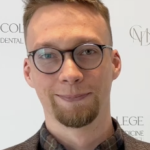

Jakub Ratka
Lek. dent.
Bardzo długo szukałem szkolenia, które by mogło zapewnić mi taki zakres, na który mi zależało i totalnie nie żałuje, że wybrałem akturat to szkolenie. Bardzo dużo wiedzy teoretycznej, poparte wszystko praktyką. Niesamowicie duża wiedza, ogrom tej wiedzy, ale przedstawiony w bardzo przystępny sposób, taki, że mogę bez problemu teraz pójść do pacjenta w poniedziałek i zaoferować mu jak najlepszą usługę. XX Edycja - Curriculum Implantoprotetyczne
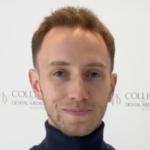

Szymon Nowak
lek. dent.
Na szkoleniu wprowadzaliśmy implanty, było bardzo intensywnie. Mieliśmy 6 zabiegów, bo bardzo dużo w wprowadzanych implantów właśnie skończyliśmy mega duży zabieg pacjenta z wprowadzeniem 4 implantów, z podniesiemiem na zatoki, Z PRF'em, Tak, bardzo intensywnie spędzony czas.
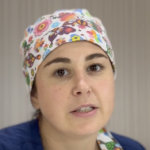

Marta Katarzyńska-Konwa
Dr n. med.
Szkolenie jest mega, bardzo profesjonalne, Dr Munk jest świetnym nauczycielem, mentorem i daje nam wiele bardzo cennych rad, z czego możemy skorzystać i jesteśmy bardzo zadowoleni.
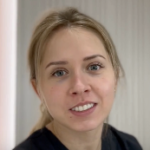

Katarzyna Czarzasta
lek. stom.
Było bardzo dobrze, było to co czego oczekiwałem. Miła atmosfera, szkolenie prowadzone we właściwym tempie. Polecam !
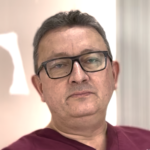

Janusz Banasik
lek. stom.
Czuję się naładowana, wiedzą i nowymi umiejętnościami. Na pewno były to intensywne trzy dni. Natomiast myślę, że zarówno ja i pozostali uczestnicy, wyciągnęliśmy wiele z tych zajęć. Wkręciliśmy swoje pierwsze implanty, także było ekstra.
